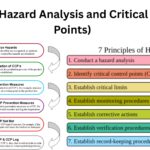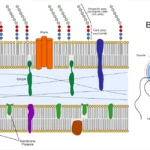Q.13 Which one of the following statements about polyploidy is correct? (A) Autopolyploids are derived from a single species (B) Autopolyploids are derived from two different species (C) Allopolyploids are derived from a single species (D) Allopolyploids are not fertile when mated with each other

IIT JAM Biotechnology
Questions answers Related to IIT JAM Biotechnology
Q.14 Which one of the following hormones is a tyrosine derivative? (A) Epinephrine (B) Estradiol (C) Progesterone (D) Testosterone
Q.14 Which one of the following hormones is a tyrosine derivative? (A) Epinephrine (B) Estradiol (C) Progesterone (D) Testosterone
Q.15 Which one of the following immunoglobulins crosses the human placenta? (A) IgA (B) IgE (C) IgG (D) IgM
Q.15 Which one of the following immunoglobulins crosses the human placenta? (A) IgA (B) IgE (C) IgG (D) IgM
Q.16 Determine the correctness or otherwise of the following Assertion [a] and the Reason [r]: Assertion [a]: The resolving power of a transmission electron microscope is higher than that of the light microscope. Reason [r]: The wavelength of electrons is shorter than that of visible light.
Q.16 Determine the correctness or otherwise of the following Assertion [a] and the Reason [r]: Assertion [a]: The resolving power of a transmission electron microscope is higher than that of the light microscope. Reason [r]: The wavelength of electrons is shorter than that of visible light.
Q.17 Match the morphology in Group I with the corresponding microorganism in Group II: Group I: P. Coccus Q. Rod R. Comma S. Spiral Group II: 1. Treponema 2. Bacillus 3. Neisseria 4. Vibrio
Q.17 Match the morphology in Group I with the corresponding microorganism in Group II: Group I: P. Coccus Q. Rod R. Comma S. Spiral Group II: 1. Treponema 2. Bacillus 3. Neisseria 4. Vibrio
Q.18 Which one of the following genetic crosses and their results indicates cytoplasmic inheritance? (A) Wild-type male mutant female → 100% progeny are mutant (B) Wild-type male mutant female → 25% progeny are wild-type (C) Mutant male wild-type female → 50% progeny are mutant (D) Mutant male wild-type female → 75% progeny are wild-type
Q.18 Which one of the following genetic crosses and their results indicates cytoplasmic inheritance? (A) Wild-type male mutant female → 100% progeny are mutant (B) Wild-type male mutant female → 25% progeny are wild-type (C) Mutant male wild-type female → 50% progeny are mutant (D) Mutant male wild-type female → 75% … Read more
Q.19 Which of the following is NOT a characteristic morphological feature of apoptotic cells? (A) Disassembly of nuclear envelope (B) DNA fragmentation (C) Increased cell size (D) Membrane blebbing
Q.19 Which of the following is NOT a characteristic morphological feature of apoptotic cells? (A) Disassembly of nuclear envelope (B) DNA fragmentation (C) Increased cell size (D) Membrane blebbing
Q.20 Competition between two populations in an ecosystem is (A) beneficial (+) to both the populations (B) deleterious (˗) to both the populations (C) beneficial (+) to one population, but deleterious (˗) to the other population (D) beneficial (+) to one population, but no effect (0) on the other population
Q.20 Competition between two populations in an ecosystem is (A) beneficial (+) to both the populations (B) deleterious (˗) to both the populations (C) beneficial (+) to one population, but deleterious (˗) to the other population (D) beneficial (+) to one population, but no effect (0) on the other population
Q.8 Which one of the following hormones promotes fruit ripening? (A) Abscisic acid (B) Auxin (C) Ethylene (D) Gibberellin
Q.8 Which one of the following hormones promotes fruit ripening? (A) Abscisic acid (B) Auxin (C) Ethylene (D) Gibberellin
Q.9 Which one of the following has a catalytic RNA? (A) Ribonuclease H (B) Ribozyme (C) RNA polymerase I (D) RNA polymerase II
Q.9 Which one of the following has a catalytic RNA? (A) Ribonuclease H (B) Ribozyme (C) RNA polymerase I (D) RNA polymerase II




